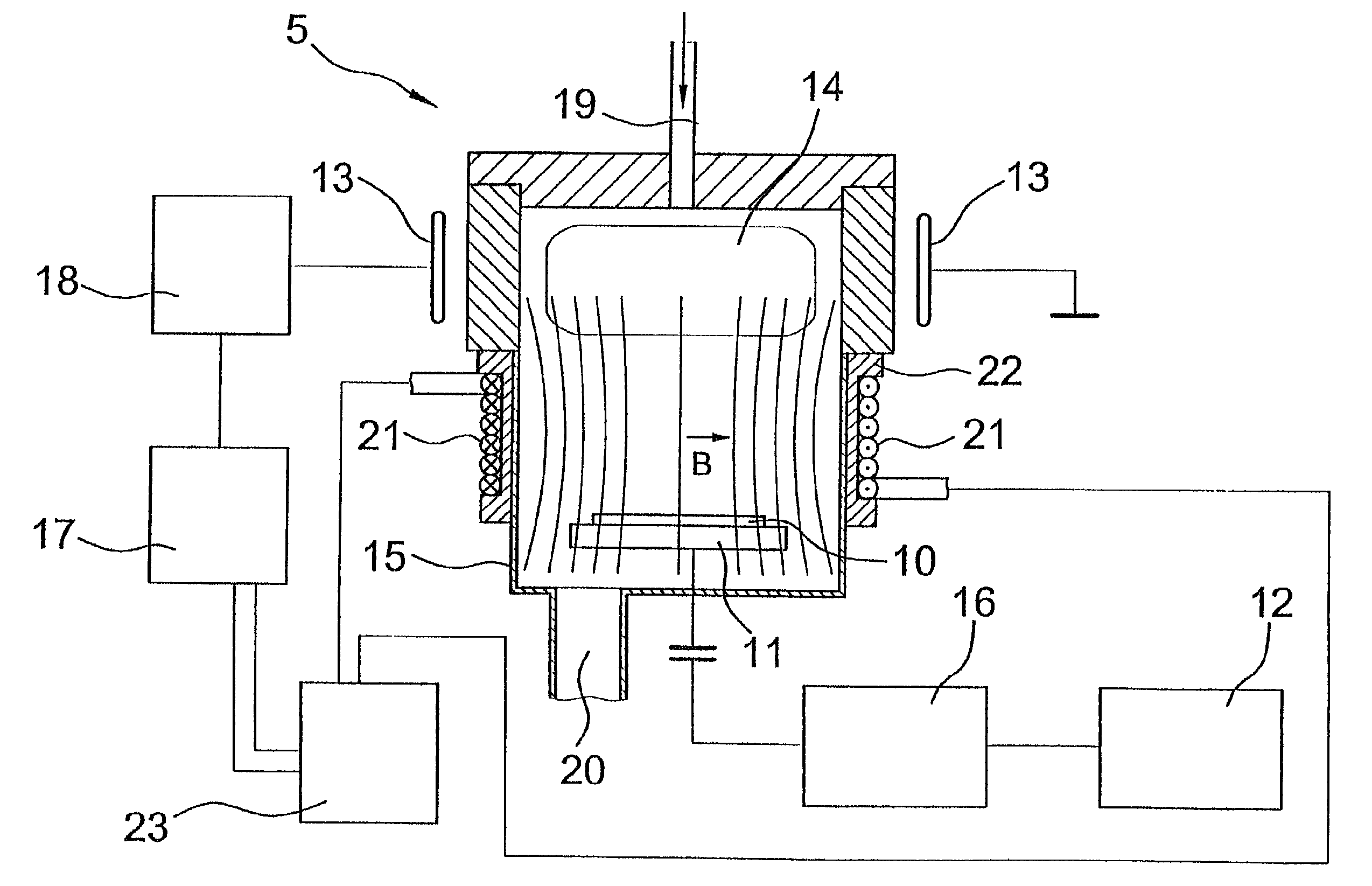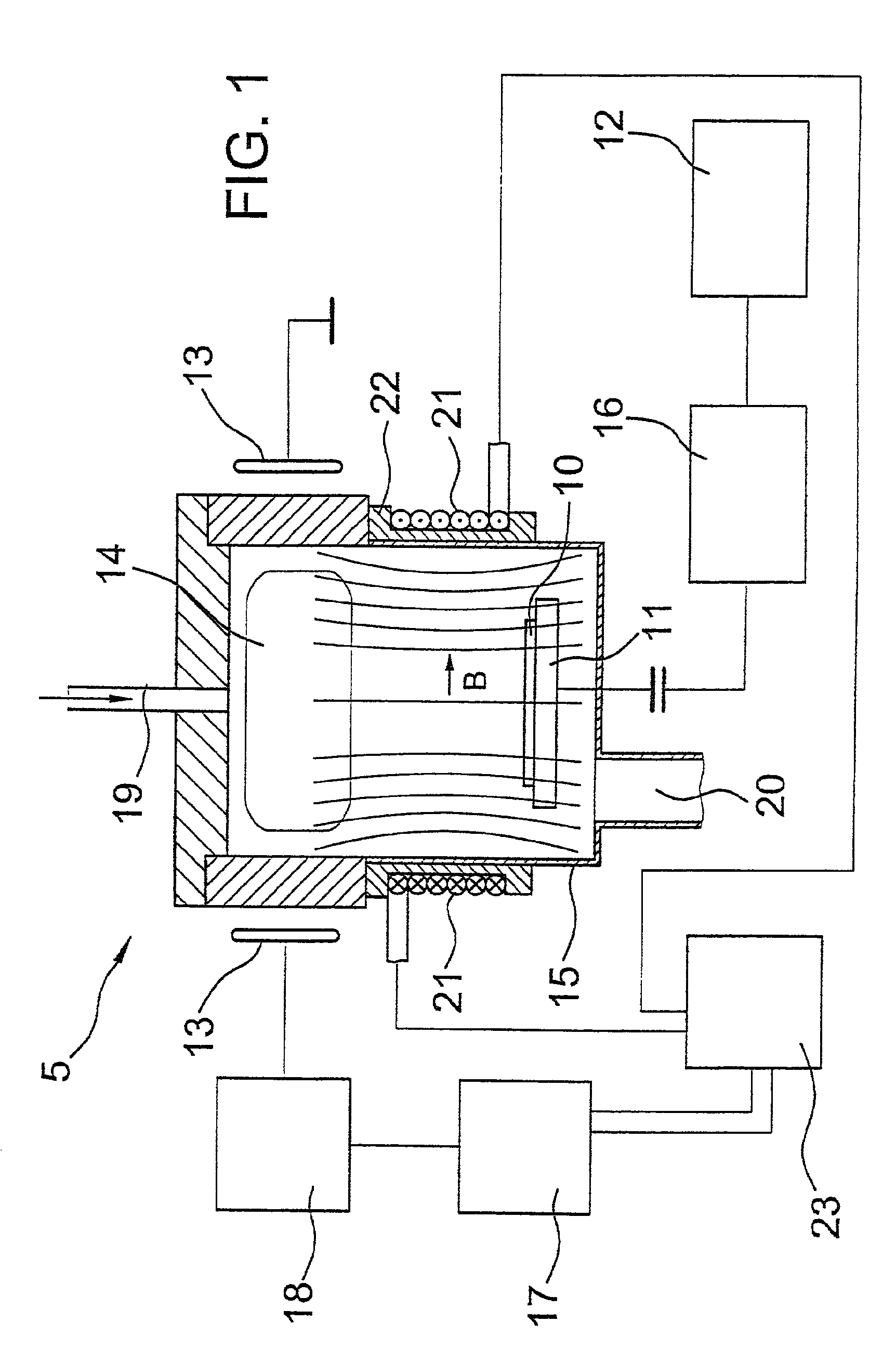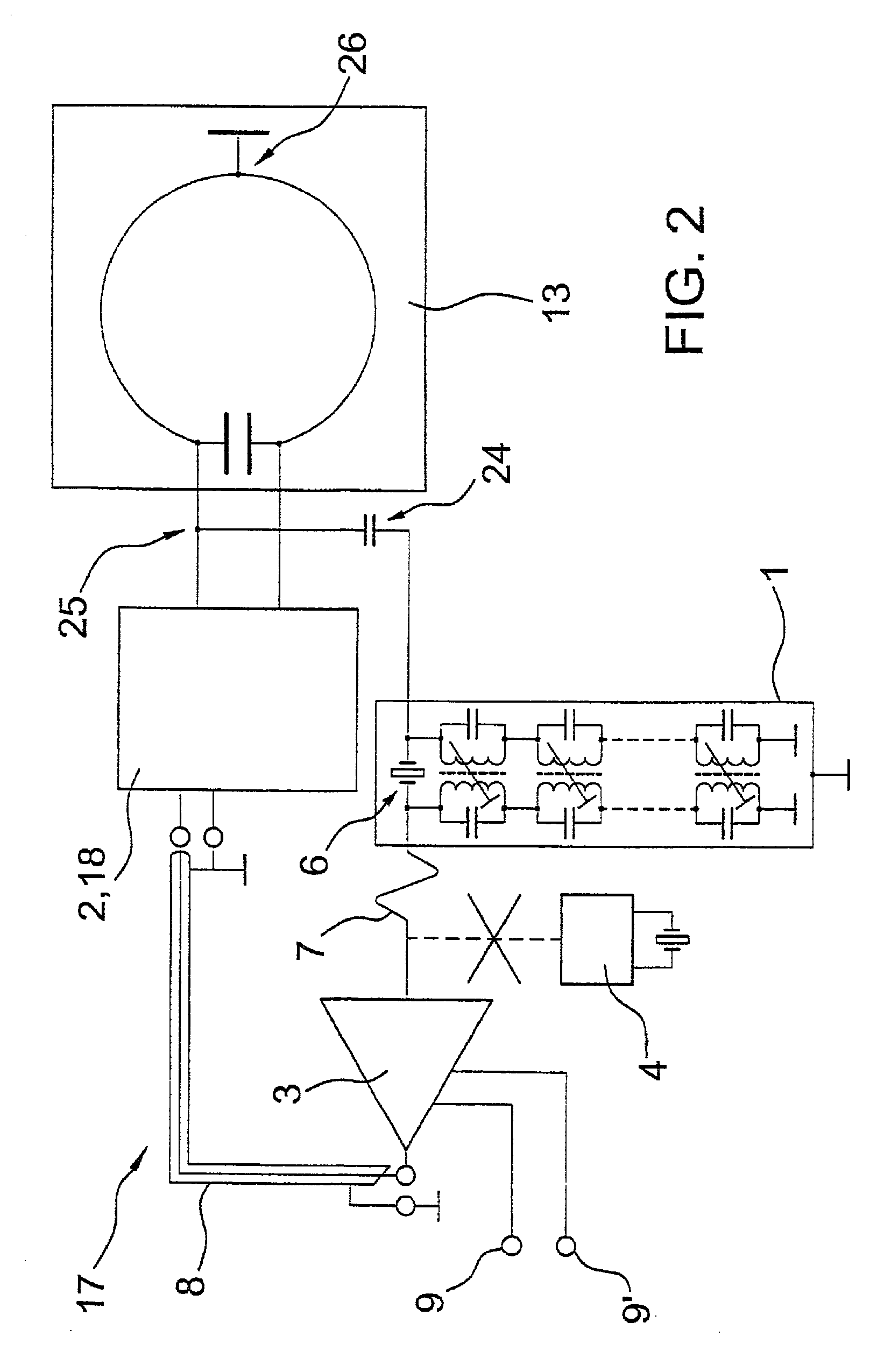Device and method for etching a substrate using an inductively coupled plasma
a technology of inductively coupled plasma and substrate, which is applied in the direction of plasma technique, electric discharge tube, decorative arts, etc., can solve the problems of unstable plasma injection, adversely affecting the etching results on the substrate wafer, and affecting the etching results, so as to improve the efficiency of reactive species and ions generation, the effect of improving the profile control during etching and plasma density
- Summary
- Abstract
- Description
- Claims
- Application Information
AI Technical Summary
Benefits of technology
Problems solved by technology
Method used
Image
Examples
Embodiment Construction
[0031]A first exemplary embodiment of the present invention is explained in greater detail with reference to FIG. 1. For this purpose, a plasma etching system 5 first has a reactor 15, in whose upper area an inductively coupled plasma 14 is generated in a manner known per se via an ICP source 13 (inductively coupled plasma). Additionally provided are a gas supply 14 for the supply of a reactive gas such as SF6, ClF3, O2, C4F8, C3F6, SiF4 or NF3, a gas discharge 20 for the discharge of reaction products, a substrate 10, for example, a silicon body or silicon wafer to be structured using the etching method of the present invention, a substrate electrode 11 being in contact with substrate 10, a substrate voltage generator 12, and a first impedance transformer 16. Substrate voltage generator 12 injects a high-frequency AC voltage into substrate electrode 11 and through it into substrate 10, the high-frequency AC voltage bringing about an acceleration of ions produced in inductively coup...
PUM
| Property | Measurement | Unit |
|---|---|---|
| frequency | aaaaa | aaaaa |
| power | aaaaa | aaaaa |
| radio-frequency power | aaaaa | aaaaa |
Abstract
Description
Claims
Application Information
 Login to View More
Login to View More - R&D
- Intellectual Property
- Life Sciences
- Materials
- Tech Scout
- Unparalleled Data Quality
- Higher Quality Content
- 60% Fewer Hallucinations
Browse by: Latest US Patents, China's latest patents, Technical Efficacy Thesaurus, Application Domain, Technology Topic, Popular Technical Reports.
© 2025 PatSnap. All rights reserved.Legal|Privacy policy|Modern Slavery Act Transparency Statement|Sitemap|About US| Contact US: help@patsnap.com



